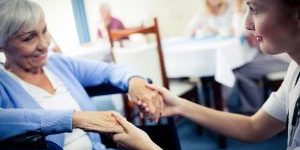Fall Prevention and Senior Home Care
One of the reasons we started this business was to help those seniors in need of assistance, and especially those who had recently suffered through a fall and injured themselves. Many of these issues can be addressed by your senior home care provider.
The statistics are alarming. According to the National Council on Aging:
FALLS ARE COMMON
Falls are the leading cause of fatal and non-fatal injuries for older Americans.
1 in 4 older adults falls each year.
Every 11 seconds, an older adult is treated in the emergency room for a fall.
Every 19 minutes, an older adult die from a fall.
FALLS CAN CAUSE SERIOUS INJURIES
Falls result in injuries, such as hip fractures, broken bones, and head injuries. In fact, more than 2.8 million older adults are treated in emergency departments annually because of a fall, resulting in over 800,000 hospitalizations.
FALLS ARE COSTLY
The average hospital cost for a fall injury is over $30,000. Falls, with or without injury, carry a heavy burden on quality of life. After a fall, many older adults develop a fear of falling and, as a result, limit their activities and social engagements. Fear of falling can result in further physical decline, depression, social isolation, and feelings of helplessness.
FALLS IMPACT CAREGIVERS, TOO
Research has shown that after a care recipient’s first fall, caregivers report a significant increase in caregiver burden, fear of falling, and depression.
How to know where to look to detect risks associated with falls.
PHYSICAL ACTIVITY, as we age, most of us lose some strength, coordination, flexibility, and balance. This is usually a result of inactivity, increasing the risk of falls.
VISION, As our eyes age. less light reaches the retina, which makes it harder to see contrasting edges, tripping hazards, and obstacles.
MEDICATION: Some prescriptions and over-the-counter medications can cause dizziness, sleepiness, dehydration, or interactions with each other that may lead to a fall.
ENVIRONMENTAL: Most older adults have lived in their homes for a long time and have never thought about simple modifications that can keep them safer as they age.
CHRONIC CONDITIONS: More than 90% of older adults have at least one chronic condition like diabetes, heart disease, or arthritis. Often, these increase the risk of falling because they result in lost function, inactivity, depression, pain, or use of multiple medications. *
*Source: National Council on Aging (NCOA)
What are some steps we can take to prevent a fall?
This is something that cannot be done alone. You and your loved ones need help from others to increase your loved one’s mobility and reduce the risk of falling and injuries. The goal for our loved one needs to be to effectively prevent a serious injury, stay healthy and maintain an independent lifestyle.
Our first step is to start a conversation with our loved one to determine if they are at risk for a fall. If they are at risk for a fall, be ready to have a loving conversation with that person then develop a falls prevention action plan.
Is it time to talk about Falls Prevention?
A few years ago, the Los Angeles VA Geriatric Research Education Clinical Center created a falls risk self-assessment tool containing 12 “Yes” or “No” statements to determine if you may be at risk of falling. The statements:
- I have fallen in the last year.
- I can, or have been advised to use, a cane or walker to get around safely.
- Sometimes, I feel unsteady when I am walking.
- I steady myself by holding onto furniture when walking at home.
- I am worried about falling.
- I need to push with my hands to stand up from a chair.
- I have trouble stepping up onto a curb.
- I often have to rush to the toilet.
- I have lost some feeling in my feet.
- I take medicine that sometimes makes me feel light-headed or more tired than usual.
- I take medicines to help me sleep or improve my mood.
- I often feel sad or depressed.
If you answered 4 or more of these questions “Yes”, you may be at risk of falling. Hopefully, everyone passed and had less than four “yes” answers.
Let’s discuss the next steps to take in order to prevent a fall from occurring.
- First, we need to educate ourselves prior to having the conversation with our loved one. It’s not easy to tell a friend or family member that we are concerned about their safety and their risk of falling. We need to:
- Engage other friends or family members in the conversation about our concerns
- Be considerate in the words we use (be compassionate)
- Be mindful of how we describe the changes we have noticed that increases their risk in falling.
- Be positive, but continue to be mindful of our tone and body language.
- Recognize that this conversation may need to happen more than once.
- Go on a doctor’s visit with your loved one and share your concerns with the doctor.
None of this is perfect, but our love and concern for this person should be evident.
Canyon Lake Senior Home Care is a non-medical provider of personal in-home senior care. We offer a COMPLEMENTARY In-Home Consultation and a FREE Home Safety Inspection. Please contact so we may assist you in your caring needs.








